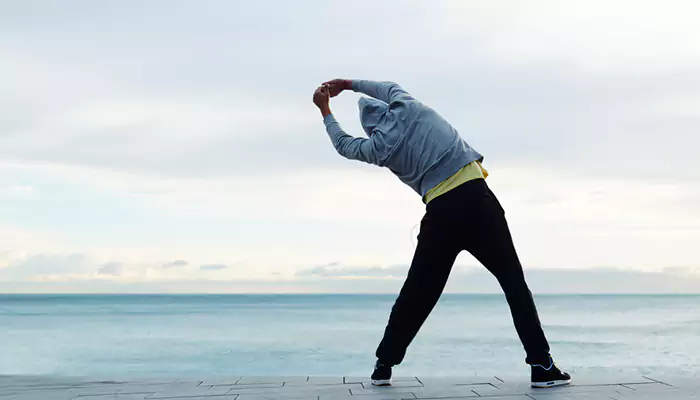Ballistic Stretching Uncovered: What You Need to Know
Here is what you need to know about ballistic stretching.
- Ipsita Jha
- 26 August, 2024
- 2 mins ago

Ballistic Stretching Uncovered: What You Need to Know
Here is what you need to know about ballistic stretching.
Ballistic stretching has become a growing trend in the wellness world. Essentially, it is a warm-up stretch. It involves fast and sudden movements to increase one’s flexibility. This form of exercise is mostly performed by athletes to improve their muscle power and range of motion. Here is all you need to know about ballistic stretching before you give it a try.
Before you attempt to do ballistic stretching, you should know it is not a simple warm-up exercise. Athletes and ballet dancers generally do it. You should consult with a doctor or a trainer before you try it.
When one performs the movements involved in ballistic stretching, it forces the body to go beyond the range of motion it normally would. This is achieved through bouncing and using the momentum to perform a hyperextended stretch.
There is a huge difference between ballistic and static stretching. Ballistic stretching involves a sudden bouncing movement. If not done properly it can cause injury, which is why it is not recommended for everyone. Even though ballistic stretching can benefit athletes and ballerinas, it does come with its own set of risks. Some studies have found ballistic stretches could cause hamstring weakness and even muscle injury. Performing ballistic stretching for a long period could even cause hamstring to quadriceps imbalance. That is why it is best to do ballistic stretches under the guidance of a trainer.
Static stretching is more appropriate for beginners as it does not involve jerky movements. You do not have to push your body’s range of motion and it can still improve your flexibility. Static stretching is more useful, especially for the average person. Studies have found it increases hamstring flexibility better than ballistic stretching. One study’s findings suggest that static stretching delays the onset of muscle soreness post-exercise.

Do not push yourself to do something your body is not ready for. Opt to do static stretching before you exercise. Here are some simple warm-up stretches you can do if you just started your fitness journey:
Toe touches
Calf stretches
Arm circles
Neck tilts
Downward dog pose
Neck rotations
Side lunges
Shoulder rotations
The most important thing to note is to find exercises that work for you, especially if you are a beginner. If you are unsure where to begin, seek expert advice.










